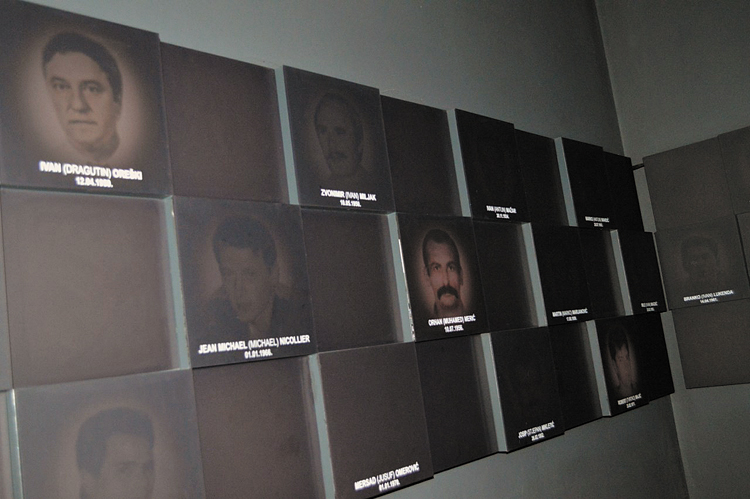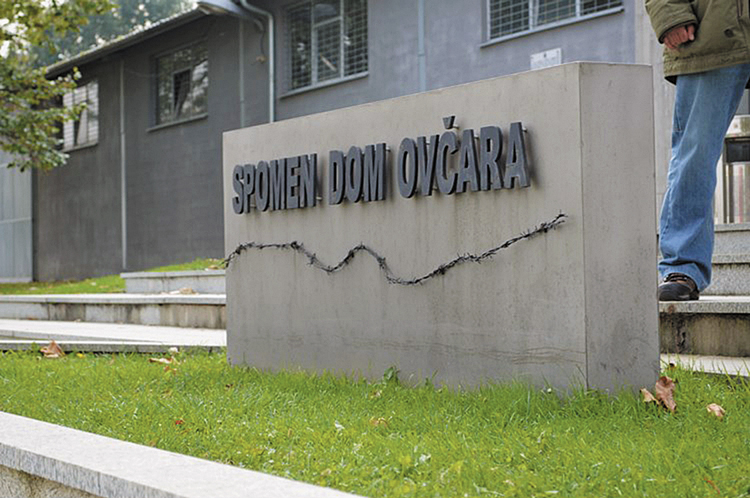On the day of the international recognition of the Republic of Croatia a third of…
Mass grave – a reminder of Vukovar’s sacrifice
The marking of 18 November 1991 – the Remembrance of the Victims of the Homeland War and the Vukovar and Škabrnja remembrance days is an occasion to remind of some of the most tragic moments of the Homeland War. The largest mass grave of the victims of the Homeland War was found at Ovčara (with remains of 200 victims), and the New Cemetery in Vukovar – the largest grave arranged after the sanitation of the battlefield, where the remains of 938 victims were buried.
The mass grave at Ovčara is one of the most drastic reminders of the victim of Vukovar in the Homeland War, when at least 200 wounded persons were taken from the Vukovar hospital and killed near the Ovčara farm. The existence of the mass grave was first revealed in October 1992 after the publication of the testimony of a surviving Croatian defender exchanged at Nemetin in August 1992, which helped to precise the location of the grave at Ovčara and establish the fate of the wounded, the defenders of Vukovar and of the Vukovar Hospital staff.
The exhumation was performed in 1996, but early December 1992 saw a preliminary investigation of the site by international forensic scientists led by Dr. Clyde Snow, under the auspices of the UN’s Commission of Experts. The remoteness of the site revealed the intent of the executors to bury the victims secretly. The chains with Catholic crosses and metal plaques with the motto “God and Croats” undoubtedly indicated that the victims were Croats.
Although the performance of exhumation was recommended and planned back in March 1993, it met obstructions, primarily by the Serbian side. It was only in 1996 that ICTY investigators and a team of forensics – the Human Rights Doctors performed exhumations from 31 August to 4 October 1996 pursuant to the indictment in the Case Mrkšić et al. exhuming 200 victims, 198 male and two female victims, aged on average 32.5 years, in the age range from 16 to 72 years.
According to the descriptions, most bodies still had several layers of clothing on, in 34 % cases patient gowns and hospital staff uniforms; as many as 55% were wound with evidence of hospital treatment. 95% out of 200 victims were found with firearms wounds in heads and/or trunk.
The new cemetery
Another tragic reminder of the victims of the Homeland War is the New Cemetery (Dubrava) in Vukovar. Unlike the grave at Ovčara, the grave at the New Cemetery was arranged after the sanitation of the battlefield. Following the occupation of Vukovar in late November 1991 through March 1992 the JNA and the supporting paramilitary formations exhumed individual and mass graves which contained the remains buried during the three months of the battles and transferred them to the New Cemetery in Vukovar. .
Although the responsible bodies of the Republic of Croatia had some information on the grave and reconstruction of grave lots was performed, exhumation was not feasible until the completion of the Peaceful Reintegration. In April 1998 the County Court in Vukovar ordered “exhumation of the remains of Croatian defenders and civilians killed during the aggression on the Republic of Croatia in Vukovar”, as of 27 April 1998.
The exhumation engaged a number of relevant bodies, notably the Ministry of Defence, which was responsible for the exhumation works, with precisely outlined tasks and procedures with the found remains of the victims.
Identification of victims
By the end of the first day of the exhumation on April 27, 1998, the remains of at least 42 people were discovered, and after the first week of the exhumation, on 2 May 1998, a first major burial of the exhumed remains of 39 victims (23 members of the Croatian Army, three members of the Ministry of the Interior, two members of the Civil Protection and 11 civilians) was conducted at the New Cemetery.
The exhumation of the New Cemetery was concluded with the exhumation of the last of the 938 victims on 3 July 1998. Victims of the Croatian origin accounted for 79.5 % the total number of the identified victims, and the remaining 20.5 were other ethnicities living in and around Vukovar. Furthermore, 23% exhumed victims were female persons, 12 persons under age and 251 persons aged over 60. The data strongly suggest most inhumane treatment of the population protected by international humanitarian law.
By the end of the first day of the exhumation on April 27, 1998, the remains of at least 42 people were discovered, and after the first week of the exhumation, on 2 May 1998, a first major burial of the exhumed remains of 39 victims (23 members of the Croatian Army, three members of the Ministry of the Interior, two members of the Civil Protection and 11 civilians) was conducted at the New Cemetery.
During the exhumations a Cemetery of Croatian Defenders of the Homeland War Veterans, now known as the Memorial Cemetery of Homeland War Victims in Vukovar, was arranged.
In view of the sensitivity of the fate of the missing persons both for their families and for the Croatian society in general, the Ministry of Homeland War Veterans and the responsible authorities of the Republic of Croatia continue investing joint efforts to reveal the fate of the rest of the missing.
Despite the systematic activities undertaken by the Republic of Croatia to protect the victims of the Homeland War and the persistent efforts by the Ministry of the Homeland War Veterans, 1,869 persons are still missing (525 from the Vukovar – Srijem County, out of whom 386 persons were missing or forcedly abducted from Vukovar and the surrounding localities).
During the office of the Deputy Prime Minister and Homeland War Veterans Minister Tomo Medved and the State Secretary of the Homeland War Veterans Minister Stjepan Sučić, the Head of the Directorate for Detained and Missing Persons (from 2016-2020), field excavations conducted at 82 sites in the area of Vukovar and the surrounding localities, covering an area of 414 047.5 m2 in the duration of 376 working days. The most extensive works were conducted at Ovčara, systematically and continuously covering an area of min. 370, 251 m2 in the duration of over 140 working days), in the Engineer Range (searching an area of 16, 590 m2, in the duration of 77 working days), at the Balenica pašnjak (searching an area of 5,246 m2, in the duration of 32 working days) and at Priljevo, near the roundabout) (searching an area of 23, 409 m2, in the duration of 129 working days). In the area of the Vukovar – Srijem County the remains of a total of 16 persons were found and exhumed; the remains of 16 Croatian defenders were found and exhumed on 18 January 2020 from a mass grave found at Marinci.
200 victims were exhumed from the Ovčara mass grave
938 victims were exhumed from the grave at the New Cemetery
1,869 missing persons are still sought
Croatian version:



